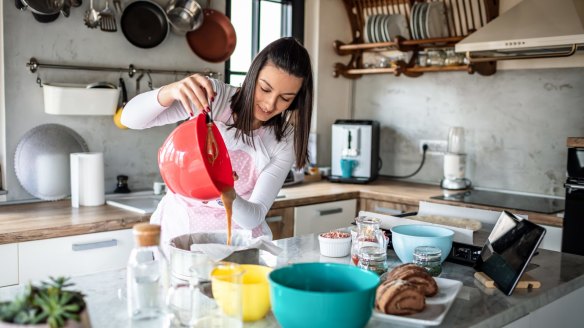Before you skip straight to the recipe, read this

Behold this tweet by product engineer Tom Redman that just a week or so ago did the impossible by uniting the notoriously venomous and opinionated world of food media.
Recipeasly – in its short-lived existence – was a simple service that everyone agreed sucked deeply. It was a platform that stripped recipes on blogs of the lengthy and rambling preambles (or should that be pre-rambles?), ads and other accoutrements that attach themselves to many recipes online.
The reaction was swift and severe. Tom seems like a decent and well-meaning guy, but when it came to Recipeasly, food writers, bloggers and just about everyone else agreed that it quite perfectly embodied a range of extremely bad traits often found in consumers of food media:
- It was intellectual property infringement.
- It devalued and exploited the work of content creators (who were often women) both ideologically and practically, firstly by skipping over the majority of their content but also by removing the creator's ability to generate revenue from ads on their pages.
- It ignored that the stuff that people scroll over before a recipe is an important explainer of the context, history and methodology around the dish the recipe hopes to create.
- Recipeasly represented exactly the kind of ugly entitlement where a casual consumer demands a content creator provide them exactly what they want, immediately and for free, and complains loudly when they don't get it.
I agree with all of that. And so, in fact, did Recipeasly. The site was taken down within hours and replaced with an apology.
But what the well-founded criticism didn't cover was that for many people who stumble upon recipes on blogs, those long-winded pre-rambles really do seem like trivial pap. For better or worse, they really do scroll past them. Often the introductions can seem poorly written, very long, extremely personal and desperately in need of a ruthless and malevolent subeditor.
So why are they even there in the first place?
This style of writing started as a way to tackle a quirk of early search engine algorithms that looked for blocks of text rather than lists. If you had a recipe for Hokkien noodles and wanted the search engines to prioritise it, you had to write multiple paragraphs of text, repeating the words "Hokkien noodles" over and over again because the search engines would think that a webpage that started with a list of ingredients was about the ingredients rather than the recipe.
These days search engines are much smarter and so it's no longer necessary, but there's another important reason why all that text is there – the blogger likes to write it, and the visitors to that blog like to read it.
Like any business or service, the majority of people who visit blogs are regular visitors. They come to Amy's Baking Blog (for example) because they like Amy, they like her recipes, and they trust her. They like hearing about how she made her pound cake (for example), the problems she had, and even whether her kids liked it.
A new visitor to her blog who's just tapped "pound cake" into a search engine and blown in from the wilderness is coming very late to an often years-long relationship that bloggers have with their audience.

It's a strange thing about the internet that so many people seem to think that all content should be made specifically for them. Nobody would walk into a women's clothing store and start complaining that there are no jackets for men, but on the internet some people feel entitled to demand that content conform to what they want, even when it's completely free.
We learn about food not from recipes, but from context. If you were standing in the kitchen with your mother and she started to tell you about the history and method of the recipe she was teaching you, and why each step was important, I can't imagine you'd ask her to put a sock in it and just skip to the measurements.
Recipes are by their nature imperfect. In the spirit of Churchill, they are the worst form of food communication, except for all the others. Every dish codifies within it an enormous amount of information and knowledge of history, nutrition, culture, health, economics, cooking craft and more.
To reduce all that to a list of ingredients and steps does any dish a disservice, but in a modern world where many of us are expanding our cooking beyond the family dishes handed down to us, recipes are the only tool we have to do that.
Recipes need their context to guide us on how they fit into the puzzle of life. Scroll past it if you like, but you'll only be getting a fraction of what the recipe has to offer.
Appears in these collections
- More:
- Food
